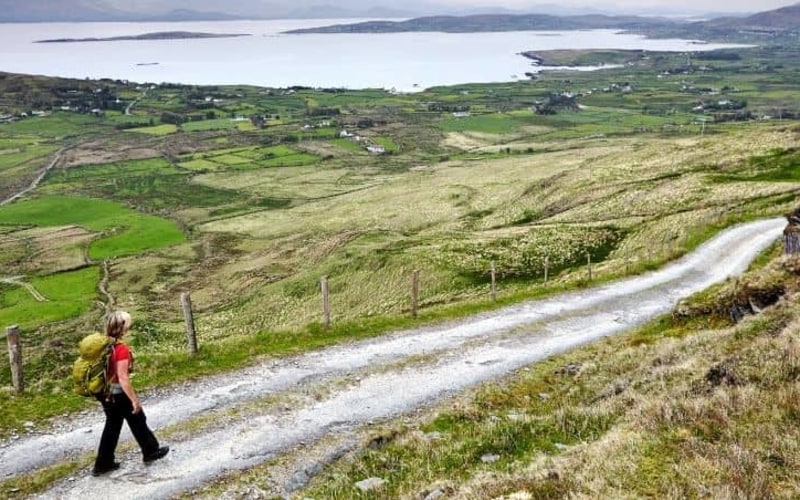The Camino de Santiago or the Way of St. James is one of the most famous pilgrimages in the world. It’s estimated over 200,000 people trek the Camino walk each year because it’s so much more than a pilgrimage: it’s a social, cultural and scenic experience.
Whether you’re drawn to the Camino for religious reasons, the physical challenge, or simply the joy of exploration, we’ve outlined everything you need to know to prepare for one of the best walking holidays in Europe.
When did people start walking the Camino?
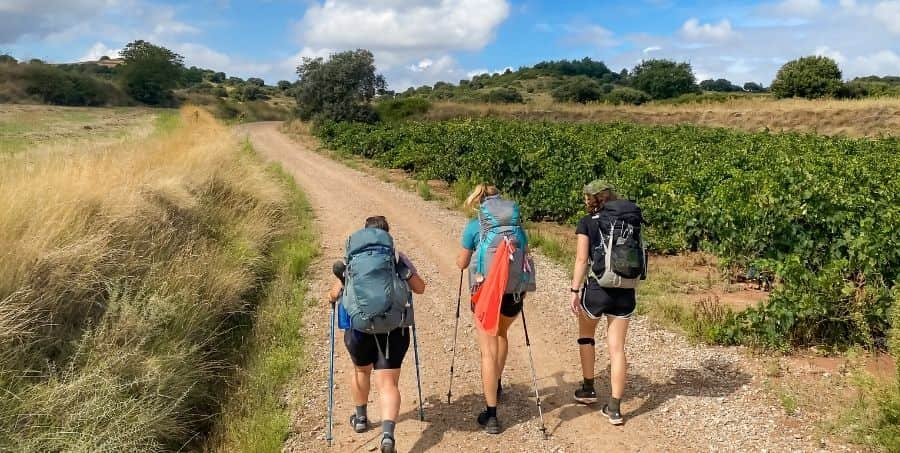
The history of the Camino de Santiago dates back to the beginning of the 9th century, when the tomb of St. James, one of the Twelve Apostles of Jesus, was allegedly discovered and started attracting pilgrims from across Europe to this holy site.
Traditionally, people set out from their own homes towards Santiago, which was how the Camino developed. Whilst some people still embark on the Camino for religious reasons, many do so for the physical challenge and adventure. There is a peacefulness to walking the Camino that can’t be fully described, only experienced.
A tradition is to greet everyone you meet along the way with “Buen Camino”. You find yourself saying this every few minutes because you are never alone on the Camino Walk. There are always people making their journey, passing by with friendly smiles of acknowledgment. Walking the Camino, you get a huge sense of accomplishment and camaraderie from the friends you meet along the way.
How many Camino de Santiago routes are there?
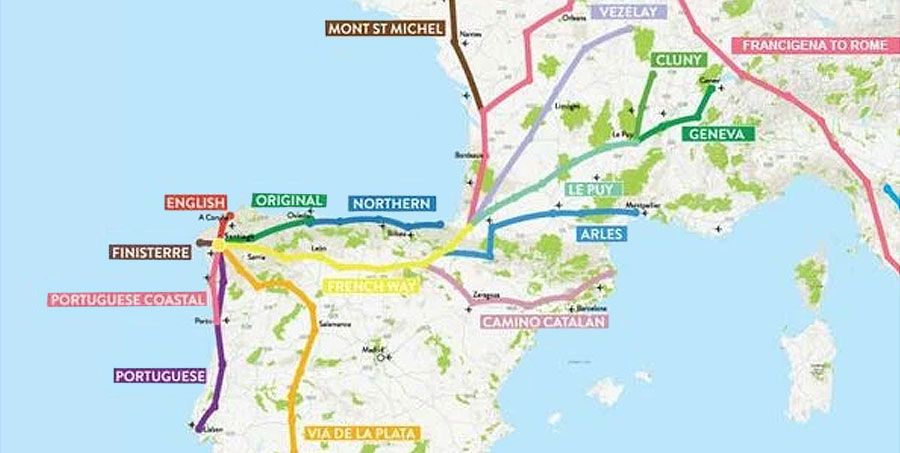
There is a large network of Camino de Santiago routes leading to the shrine of St. James in Santiago de Compostela. Its route network extends across Europe, with starting points in France, Spain, Portugal and even Ireland. Although there are a number of different trails and routes to choose from, there are seven well established routes within the Camino Walk.
The French Way, or Camino Frances, starts from Saint-Jean-Pied-de-Port and runs for 790 Km and has been a pilgrimage route since the 10th century. The Portuguese Way, or Camino Portugues, begins in Lisbon and is over 600 KM. The beauty of the Camino is you can choose which parts to walk, so it’s perfect for all levels of ability and you don’t need to be an expert walker to experience it. You can even cycle the Camino if you prefer.
Can you get lost on the Camino Walk?
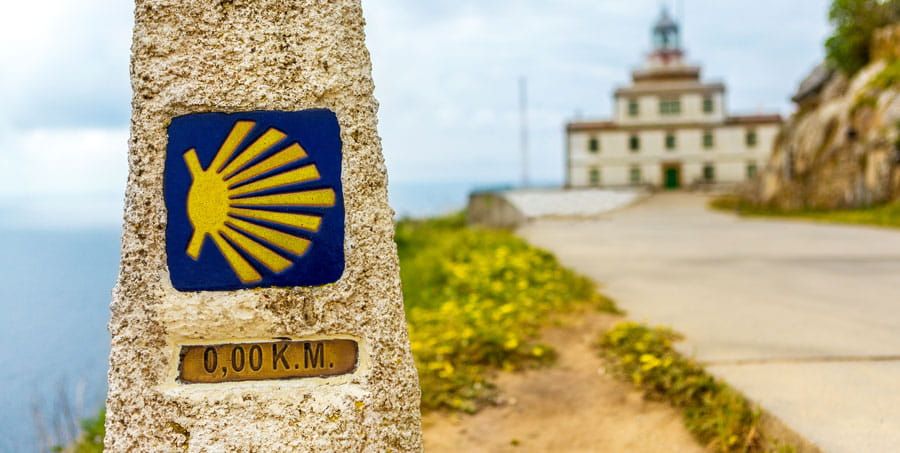
The walking routes along each section of the Camino de Santiago are generally very well marked, making it difficult to get lost. The scallop shell is one of the most iconic symbols of the ancient pilgrimage and today it is used, along with the yellow arrow, to guide pilgrims heading to Santiago de Compostela along its many different routes. You will see it painted on trees, sidewalks, tiles and so on.
The scallop shell is said to be a metaphor with its lines representing the different routes pilgrims travel from all over the world and all walking trails leading to one point: the tomb of Saint James. The shape of the scallop shell is also said to resemble the setting sun which would have been an important daily event, full of symbolism in pre-Christian societies. The scallop shell is open to interpretation in different regions so it is best to follow the yellow arrows as these are the most accurate road signs.
The benefit of booking with TD active Holidays is that you have your own local expert guide for the duration of your walks, meaning you have more time to take in the scenery without the fear of losing your way!
Where does the Camino de Santiago end?
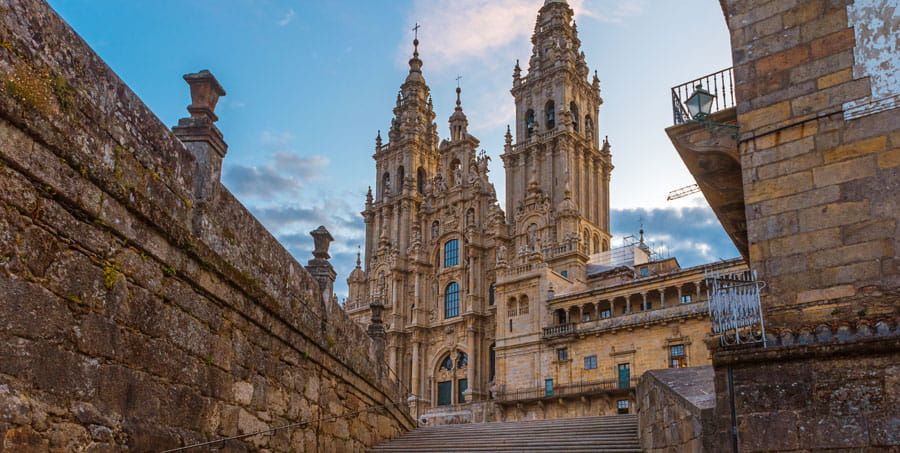
The Santiago de Compostela cathedral is the finishing point of the Camino de Santiago. Santiago de Compostela is the capital of the autonomous community of Galicia in North West Spain and its historic centre is a UNESCO World Heritage Site. The city's cathedral has been the final point of the Camino Walk as far back as the 9th century.
It is the alleged burial site of the Biblical apostle St. James and his remains reputedly lie within the cathedral. The cathedral façade is located in the Praza do Obradoiro square, in the heart of the Old Town, home to narrow winding streets full of historic buildings, squares and monuments in Romanesque, Gothic and Baroque styles.
The ancient city of Santiago de Compostela is captivating and a fantastic place to visit, especially if you’ve arrived there after making the adventurous journey along the Camino de Santiago with us!
How do I get my Pilgrim Passport for the Camino Walk?
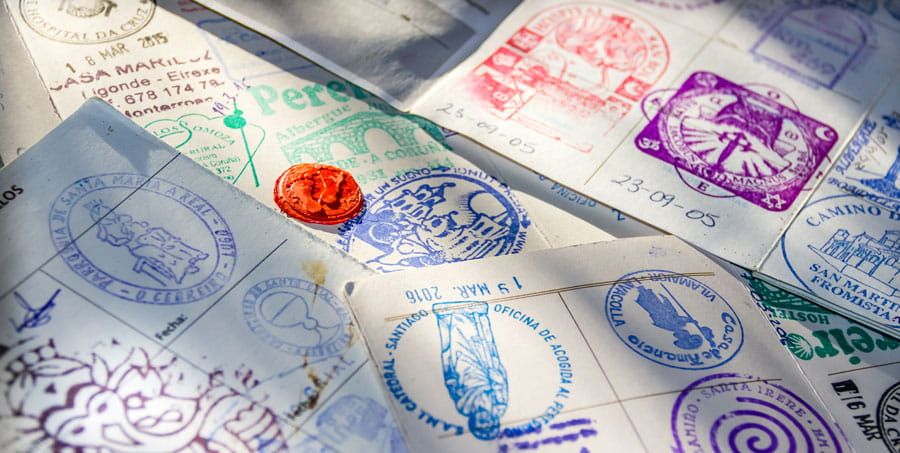
Most that embark on the Camino de Santiago, even if they are not religious, carry the ‘credencial del peregrino’ or Pilgrim’s passport. The Pilgrim’s passport is issued by Santiago Cathedral and the information and instructions are written in Spanish.
The blank boxes mark the space for your stamps which you will collect en route to Santiago de Compostela. You will need to get two stamps per day (e.g., in hotels, bars, restaurants, churches along the way) and walk at least the last 100km or cycle 200km into Santiago de Compostela in order to receive your pilgrim certificate.
When you arrive in Santiago de Compostela, you will collect your last stamp at the Pilgrims Office which is located in Rúa Carretas 33. It is here that you can request your ‘Compostela’ pilgrim certificate, proof of having completed the journey, and celebrate the accomplishment of making it all the way!
What are the best Camino routes for beginners?
For those who want to have the experience but aren’t keen to be walking 20km+ per day, our Footsteps of the Camino walking holiday is a great option. This will give you a taste of what the Camino de Santiago has to offer whilst enjoying the food, wine and culture along the famous route. There is an opportunity to visit the famous Guggenheim Museum in Bilbao which has a fantastic collection of modern and contemporary art, and a local winery in the Rioja region too.
Are there any challenging Camino Walk routes?
For more experienced walkers, our Camino de Santiago - The French Way or Portuguese Coastal Way would be a great option. They offer more of a challenge with daily walking distances between 14km and 28km per day. Also, as you walk over 100km, this allows you to earn the “Compostela”. The Last 100km takes you through woodlands, farmland and rustic hamlets, while the Coastal Way follows a beautiful coastal route to bring you to Santiago.
Join Us for Walking the Camino
On our Camino de Santiago walking holidays, you will be supported by dedicated and knowledgeable local guides and you won’t have to worry about carrying your luggage as it will be transferred to your next hotel while you tackle that day’s section of the trail.
So, all you have to do is grab your walking poles and hiking boots and join us for an epic trek on the Camino de Santiago for an incredible experience that you will never forget!


